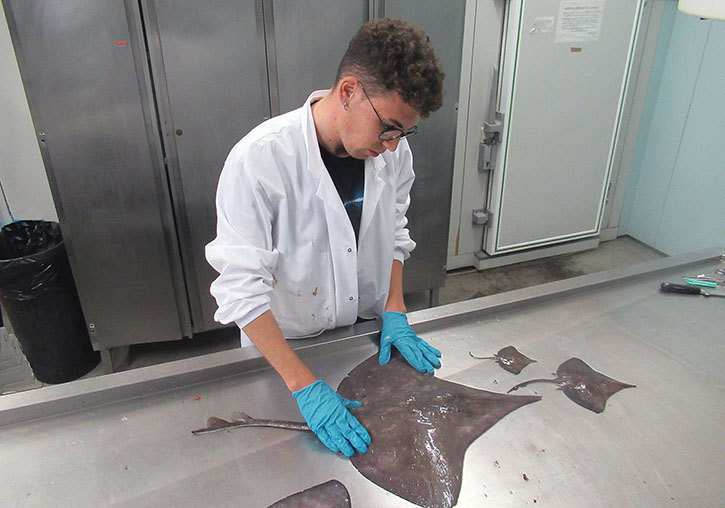
More than half of the sharks and rays in the Mediterranean are at risk of extinction due to the growing threat of fishing pressure, climate change and pollution. A team from the Cavanilles Institute of the University of Valencia provides new data on the situation of these species whose conservation is essential for the functioning of marine ecosystems. The work is part of the ECEME project of the Fundación Biodiversidad.
Sharks and rays, also called elasmobranchs or cartilaginous skeleton fish, play a key role in regulating marine ecosystems. These animals control the populations of their prey, which maintains the balance of the seas and oceans. However, due to their slow growth, late maturity, and few offspring, they are highly vulnerable to human activities.
Its main threat is fishing pressure, a situation that is magnified by habitat degradation, climate change and pollution. In the Mediterranean, more than half of the species of sharks and rays are at risk of extinction, which endangers the functioning of marine ecosystems. Sharks and rays are not targeted by Mediterranean fisheries, but are taken by-catch and incidental. Better handling and management of their populations are necessary to ensure their subsistence.
The ECEME project ‘Evaluation of the conservation status of sharks and rays in the Mediterranean’, carried out by a research team from the University of Valencia, the Institute of Marine Sciences (CSIC) and the NGO Catsharks, co-funded by the Biodiversity Foundation of the Ministry for the Ecological Transition and the Demographic Challenge, its main objective is to assess the abundance and distribution of sharks and rays in the Spanish Mediterranean through fishing data obtained from on-board observation programs.
The latest work, recently published in the journal Frontiers by this team, has described the abundance of each of the shark and ray species in the bottom trawling areas of the Spanish Mediterranean and the way in which they interact with bottom trawling.
This information has allowed us to understand how environmental factors and fishing pressure in combination affect the elasmobranch community, which changes depending on environmental conditions such as depth, bottom temperature and type of substrate. “Understanding how the community changes with climatic and environmental conditions allows us to better predict the possible impacts of climate change and habitat destruction in order to establish priorities for its conservation”, says David Ruiz-García, first signatory of the paper.
According to the article, fishing effort also plays a key role in modifying the elasmobranch community: in areas with the highest frequency of fishing, populations of sharks and rays decrease notably, as does their diversity. In fact, the composition of the elasmobranch community has changed remarkably since the 1950s. Some of the locally extinct species were then routinely caught, including sharks such as spiny dogfish, nursehound or angelshark. However, others such as the dogfish are becoming more abundant in the area. “These species appear to be able to withstand the effects of human activities, thanks to their rapid and prolific reproduction. Now we are heading towards an ecosystem that is less diverse, simpler, less productive and less capable of assuming the changes that may occur in the future due to global change”, adds Ruiz-García.
Given the need to continue monitoring the populations of sharks and rays in the Mediterranean with a view to their conservation, the ECEME project promotes the establishment of management plans for the conservation of elasmobranchs in the Mediterranean and awareness-raising and collaboration measures towards the fishing sector. “It is essential that the sector is able to adequately identify the protected elasmobranch species, as well as to correctly handle these specimens when they are on board to try to ensure their survival after capture”, concludes the researcher from the University of Valencia.
Links:





